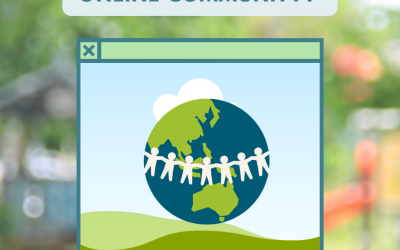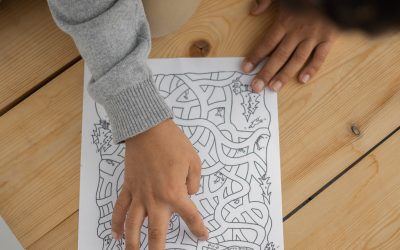Overview
This activity will assist students in identifying the role of social media in their lives. Secondly, to reflect on the positive and negative effects social media use has on their relationships. Finally, to help students recognize “red flag feelings” when using social media and use the Feelings & Options thinking routine to consider ways to handle them.
NB Curricular Connections
Technology 6-8
- Strand: Design Thinking Skills, Big Idea: Problem Solving,
- Strand: Information Technology Skills, Big Idea: Digital Citizenship
What you’ll need
- Lesson Slides
- Video: Teen Voices: Friendships and Social Media
- Noticing Red Flag Feelings Handout (Student Version and Teacher Version)
- Optional: Lesson Quiz
Instructions
- Project Slide 4 and ask: What percentage of people in this class do you think are on social media, like Instagram, Snapchat, or something similar? Hold up five fingers if you think most or everyone, three fingers if you think maybe around half, and zero or one finger if you think very few or none. If necessary, clarify that social media includes websites and applications that enable users to create and share content or to participate in social networking (Slide 5). Observe responses and tell students your estimate for the room, e.g., seems like most people think…
- Explain that, legally, many social media sites require you to be at least 13 years old to sign up, and some even require you to be 17 or 18. Ask: How do you think the percentage in this class compares with teens in general? What percentage of teens in Canada do you think are on social media? Explain that, legally, many social media sites require you to be at least 13 years old to sign up, and some even require you to be 17 or 18. Ask: How do you think the percentage in this class compares with teens in general? What percentage of teens in Canada do you think are on social media. Call on students to respond. Project Slide 6 and point out that 70% of teens use social media multiple times per day.
- Invite Students to share out other things they notice on the infographic. Ask them whether these results match their own experiences and those of their friends.
Sharing It All
- Show the Teen Voices: Friendships and Social Media video on Slide 7. After watching, have partners discuss the questions. Call on pairs to share out. They should identify some or all of the following responses:
- Benefits: You can connect with friends, share pictures of what you are doing or thinking, share exciting things you’re doing, stay up to date on the latest happenings.
- Problems or drawbacks: It’s distracting, you feel you have to be on it, there’s pressure to be perfect, there’s pressure to look like your life is great, it can make you feel sad or even depressed.
- Explain that one negative part of social media, as shared by teens in the video, is feeling that you have to be on social media all the time. Invite students to share how they feel when they are without their phones or devices for a period of time. Students might mention feeling anxious, depressed, worried, or fearful they’re missing out.
- Say: Using social media this much can sometimes lead to oversharing, which is sharing personal feelings, information, or experiences that later make someone feel uncomfortable or regretful (Slide 8). Examples of oversharing include things like:
- Sharing thoughts or feelings in the heat of the moment
- Sharing things you wouldn’t want everyone to see, such as photos from a party, or of you acting silly or weird, but then it was shared with a bigger group of people
- Sharing every details of your life, like what you ate for breakfast or every thought that comes to mind
- Say: Now were going to do a quick activity reflecting on your views about social media. Keep in mind that people have different opinions and experiences with social media, and there isn’t always a right or wrong answer. For each example we go through, show whether you agree, disagree, or are undecided with thumbs up, down, or sideways. (Note: You can also adapt this activity using a polling app with students such as Mentimeter or Kahoot) Read aloud each example on Slides 9-12, allowing time for students to take a stance. For each one, highlight what the class opinions are (e.g., most people tend to agree, the class seems split, etc.).
Noticing Red Flag Feelings
- Explain that in the video, students talked about both positive and negative experiences using social media. Some of their negative experiences were caused by feelings of being isolated, anxious, or uncomfortable. Project Slide 13 and say: These feelings can be red flags. A red flag feeling is when something happens on digital media that makes you uncomfortable, worried, sad, or anxious. It is a warning that something might be wrong.
- Project Slide 14 and explain that when you have a red flag feeling, it’s important to slow down, pause, and think about how you’re feeling by using the Feeling & Options steps. Have students read aloud the questions associated with each step.
- Distribute the Noticing Red Flag Feelings Student Handout. Tell students they’re going to use the Feelings & Options steps to explore how to handle a digital dilemma. Feelings & Options is a thinking routine that supports social skills and thoughtful decision-making for digital dilemmas. Have students complete the worksheet individually.
- Arrange students into groups of three to four and have them discuss their responses together. Give groups three minutes to discuss each of the four sections. Use a timer if necessary and have them move on. Then invite each group to summarize their responses to the Feelings & Options steps. Use the Student Handout – Teacher Version for guidance.
- Optional: If time permits, have students discuss the questions on Part 2 of the handout in groups. Have students share responses with each other or with the whole class.
Wrap Up: Social Media and Me
- Say: It’s a good idea to follow the Feelings & Options steps anytime you experience a red flag feeling. Taking these steps will help you think through the options you have for handling the situation.
- Project Slide 15 and read aloud the prompt. Give students three minutes to pair-share. Call on students to share out their responses.
- Optional: Have students complete the Lesson Quiz. Send home the Family Activity and Family Tips.
Reflection Activity
Please see the attached PDF for several choices on how you and your learners can reflect upon today’s activity.






